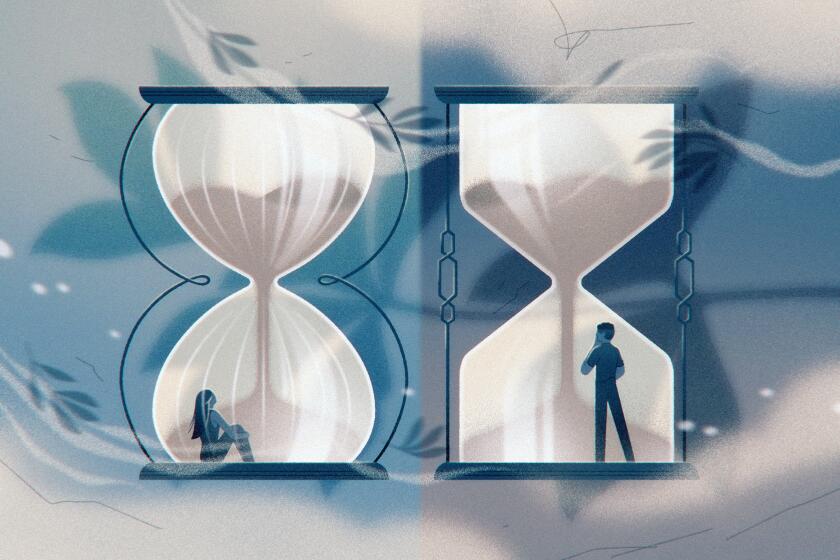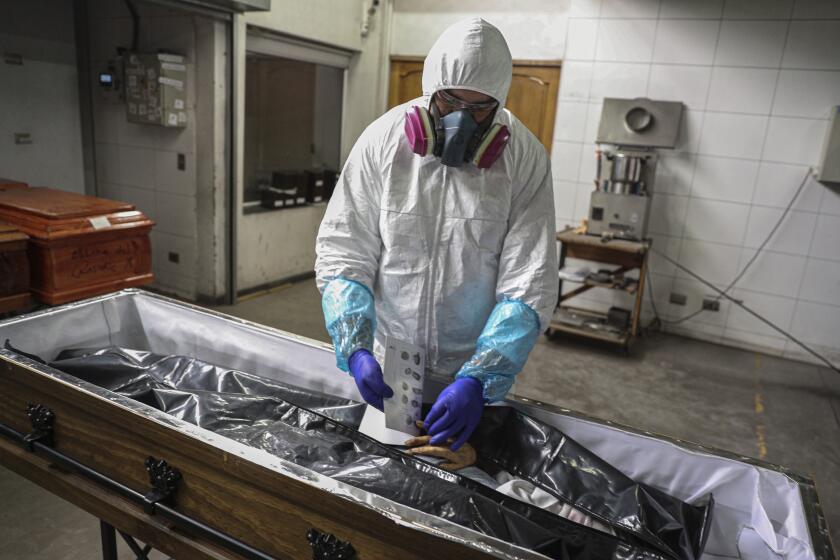FIRST, YOU NEED THE RIGHT TOOL
Two decades ago, Lee Hood, then a Caltech biologist, began experimenting with crude laser contraptions that he hoped would distinguish between the four types of nucleotides that make up the genetic code of DNA (adenine, thymidine, guanine and cytosine).
He reasoned that the nucleotides were the biological equivalent of the digital system that is the basis of all computer language--but far more complex. Computers operate on a binary system, meaning all information is stored by combinations of just two types of symbols. In contrast, DNA contains four types of symbols (the nucleotides), so the combinational possibilities are vastly greater.
Despite the greater complexity of DNA, Hood and other molecular biologists working in laboratories around the world during the 1970s adamantly believed that it was possible to determine the exact sequence of all 3 billion human nucleotides, using machinery he hoped to perfect.
“The human chromosomes can be thought of as strands of pearls with four colored balls,” Hood explained to this reporter during the spring of 1986. “In essence, sequencing involves taking each of these chromosomes and determining the color of the balls on each string. So a sequencer is a machine that determines the colors of the subunits on chromosomes.”
Once the DNA sequence is known, Hood predicted in 1986, “it will be a relatively simple matter to translate the nucleotide signals into amino acids, the amino acids into proteins and from the proteins determine the essence of human beings.”
By 1986, Hood’s initial sequencer devices looked like Model Ts compared to then-newer gadgets that could sequence up to 25,000 nucleotides per day. At that rate, it would take one lab, toiling every day of the week, 328 years to sequence the human genome. If 20 laboratories attacked the problem in a coordinated fashion, the 23 human chromosomes could be sequenced in 16 years, three months. Given that some of the human genome was already known, Bruce Alberts and his colleagues on the National Research Council Committee reasoned that the job could be done in 15 years.
But technology has improved by leaps and bounds since Alberts’ committee met in 1987, shortening the time necessary to decipher nucleotides: now a day’s work can yield 100,000 nucleotides. And the numbers of laboratories racing to elucidate human genetic information is in the thousands. Nearly 7,000 automated sequencers are currently in use, most of them manufactured by Applied Biosystems, a venture capital firm with which Hood threw in his lot in the late 1970s.
Scientists have also devised clever ways of preparing DNA for analysis to maximize the utility of the sequenced information. That speeds things up by making the entire process more efficient. Back in the 1970s, sequencing was a wild “shotgun” game, as scientists called it, wherein unidentified chunks of DNA were rammed through crude laser devices yielding the “colors” of one of Hood’s metaphorical pearl strings. But the segment of pearls was just that--a segment with no further identity. Where did it fit in the overall string of pearls? Where did it begin? And end? In essence, the “shotgunners” were getting thousands of little jigsaw pieces without having any idea how they fit together or what the overall picture was supposed to look like.
Scientists now have a variety of techniques, based on gene splicing and chopping mechanisms that operate with great precision naturally in microorganisms and animal cells, that allow them to strategically sequence bits of DNA, knowing how and where they fit in the overall chromosome. They’ve identified genetic signposts--thousands of them--that are used to map the locations of various nucleotide sequences.



